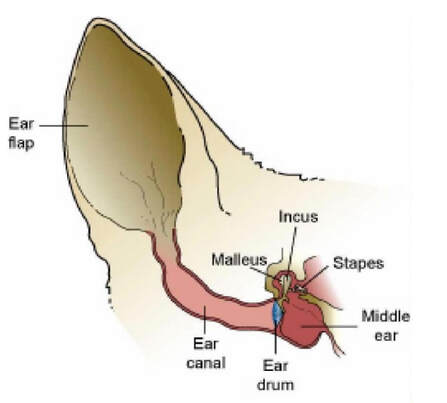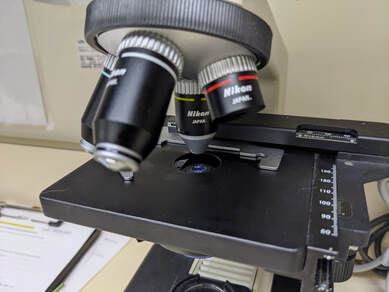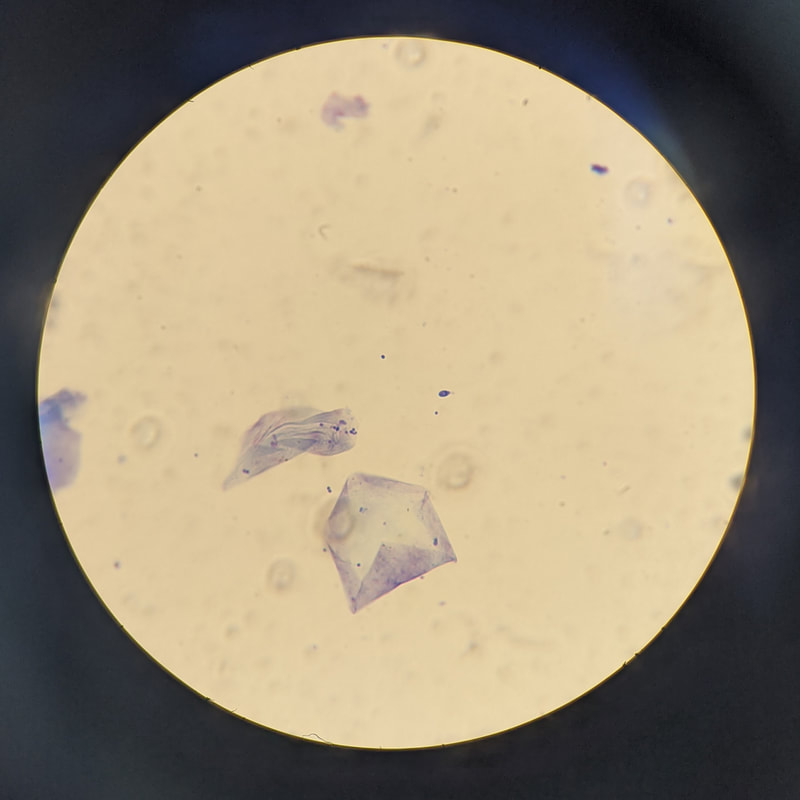Ear Infections and Ear Care
|
How common are ear infections?
Infection of the external ear canal (outer ear infection) is called otitis externa and is one of the most common types of infections seen in dogs. The most common causes of yeast ear infections in dogs are allergies and getting water in the ear. Swelling and increased secretions can lead to infections. Some breeds, particularly those with large, floppy, or hairy ears like Cocker Spaniels, Miniature Poodles, or Old English Sheepdogs, appear to be more prone to ear infections, but ear infections may occur in any breed. Cats also get ear infections, although usually due to mites. The damage that mites do can predispose a cat to chronic ear problems. Cats are also prone to ear masses and polyps that can lead to infections. What are the symptoms of an ear infection?
Ear infections are painful. Many pets will shake their head and scratch their ears trying to relieve the discomfort. The ears often become red, inflamed, and develop an offensive odor. A black or yellowish discharge commonly occurs. In chronic cases the ears may appear crusty or thickened and the ear canals often become narrowed (stenotic) due to the chronic inflammation. |
TIP from SNVH: Dog and cats ears are very different from human ears. What you see when you peak under the ear flap (pinna) is only 1/3 of the canal. The other 2/3 can be hiding problems! Never place a cotton swab or your finger into the canal past where you can see.
Don't these symptoms usually indicate ear mites?
Ear mites can cause several of these symptoms, including a black discharge, scratching, and head shaking. Ear mite infections are more common in puppies and kittens; however, adult dogs may occasionally contract ear mites from puppies or cats that are infected. Ear mites create an environment within the ear canal that often leads to a secondary bacterial or yeast (fungal) infection.
Since these symptoms are similar and usually mean an infection, why can't I just get some ear medication?
There are several kinds of bacteria and at least one type of fungus that commonly cause ear infections. Without knowing the specific kind of infection present, we do not know which medication to use. In some cases, the problem is a foreign body, a polyp, or a tumor. Treatment with medication alone will not resolve these problems. It is important that your pet be examined to ensure that the eardrum is intact. Administration of certain medications can result in loss of hearing if the eardrum is ruptured. This can only be detected by a thorough ear examination by your veterinarian.
Ear mites can cause several of these symptoms, including a black discharge, scratching, and head shaking. Ear mite infections are more common in puppies and kittens; however, adult dogs may occasionally contract ear mites from puppies or cats that are infected. Ear mites create an environment within the ear canal that often leads to a secondary bacterial or yeast (fungal) infection.
Since these symptoms are similar and usually mean an infection, why can't I just get some ear medication?
There are several kinds of bacteria and at least one type of fungus that commonly cause ear infections. Without knowing the specific kind of infection present, we do not know which medication to use. In some cases, the problem is a foreign body, a polyp, or a tumor. Treatment with medication alone will not resolve these problems. It is important that your pet be examined to ensure that the eardrum is intact. Administration of certain medications can result in loss of hearing if the eardrum is ruptured. This can only be detected by a thorough ear examination by your veterinarian.
|
How do you know which drug to use?
First, the ear canal is examined with an otoscope, an instrument that provides magnification and light. This examination allows your veterinarian to determine whether the eardrum is intact and if there is any foreign material in the canal. When a pet is in extreme pain and refuses to allow the examination, it may be necessary to sedate or anesthetize her or him for a thorough examination. The next step is to examine a sample of the material from the ear canal under a microscope to determine the type of organism(s) causing the infection. Microscopic examination is important in helping the veterinarian choose the right medication to treat the inflamed ear canal. Culture and sensitivity tests are often used in severe or chronic ear infections. |
|
How are ear infections treated?
The results of the otoscopic and microscopic examination usually determine the diagnosis and course of treatment. If there is a foreign body, wax plug or parasite lodged in the ear canal, it will be removed. Some pets must be sedated for removal of foreign body or just to allow a thorough ear flushing and cleaning without causing pain. Microscopic study of debris from the ear canal helps determine which drug to use. Many pets will have more than one type of infection present (e.g., a bacterium and a fungus, or two kinds of bacteria). This situation usually requires the use of multiple medications, or a broad-spectrum medication. An important part of the evaluation of the patient is the identification of underlying disease. Many pets with chronic or recurrent ear infections have allergies or low thyroid function (hypothyroidism). If underlying disease is suspected, it must be diagnosed and treated or the pet will continue to experience chronic ear problems. What is the prognosis? Nearly all ear infections that are properly diagnosed and treated can be successfully managed. However, if an underlying cause remains unidentified and untreated, the outcome will be less favorable. Several recheck examinations may be needed before the outcome is successful. |
How important is it to treat an ear infection?
Pets with ear infections are uncomfortable. Their ears are a source of constant pain and they frequently scratch them and shake their head. This can cause a condition called an "aural hematoma", in which blood vessels in the ear flap break, causing a painful swelling that requires surgical treatment. Deep ear infections can damage or rupture the eardrum, causing an internal ear infection and even permanent hearing loss.
The ear canal is nearly closed. Is that a problem?
Closing of the ear canal is another result of a chronic ear infection. This is known as hyperplasia or stenosis If the ear canal is swollen, it is difficult or impossible for medications to penetrate into the horizontal canal. Anti-inflammatory medications can sometimes shrink the swollen tissues and open the canal. Most cases of hyperplasia will eventually require surgery. This is very rare with proper preventative care.
What do I need to know about administering medication in the ear?
It is important to get the medication into the horizontal part of the ear canal (see diagram on page 1). Unlike our ear canal, the dog's and cat's external ear canal is "L" shaped. The vertical canal connects with the outside of the ear and is the upper part of the "L." The horizontal canal lies deeper in the canal and terminates at the eardrum. Our goal is to administer the medication into the lower part of the "L" - the horizontal ear canal.
Pets with ear infections are uncomfortable. Their ears are a source of constant pain and they frequently scratch them and shake their head. This can cause a condition called an "aural hematoma", in which blood vessels in the ear flap break, causing a painful swelling that requires surgical treatment. Deep ear infections can damage or rupture the eardrum, causing an internal ear infection and even permanent hearing loss.
The ear canal is nearly closed. Is that a problem?
Closing of the ear canal is another result of a chronic ear infection. This is known as hyperplasia or stenosis If the ear canal is swollen, it is difficult or impossible for medications to penetrate into the horizontal canal. Anti-inflammatory medications can sometimes shrink the swollen tissues and open the canal. Most cases of hyperplasia will eventually require surgery. This is very rare with proper preventative care.
What do I need to know about administering medication in the ear?
It is important to get the medication into the horizontal part of the ear canal (see diagram on page 1). Unlike our ear canal, the dog's and cat's external ear canal is "L" shaped. The vertical canal connects with the outside of the ear and is the upper part of the "L." The horizontal canal lies deeper in the canal and terminates at the eardrum. Our goal is to administer the medication into the lower part of the "L" - the horizontal ear canal.
|
|
The ear canal may be medicated by following these steps:
© Copyright 2009 LifeLearn Inc. Used and/or modified with permission under license.
|
|
The appropriate ear cleaner is being poured into the ear canal until it is full. Then the ear is massaged to help the cleaner loosen debris or infected material. Finally, a clean cotton ball is used to remove any liquid and wax.
|
For a cat, we soak a cotton ball with the appropriate cleaner to avoid scaring the cat with the loud sloshing noises of the bottle. Otherwise, the procedure is the same as for a dog.
|
Remember, getting your pet used to routine ear cleaning BEFORE an infection happens is helpful. Ear infections are painful, so being used to the cleaning when it is not painful is critical. Use lots of rewards and go slowly. Ask us for help in positive reinforcement training techniques.




